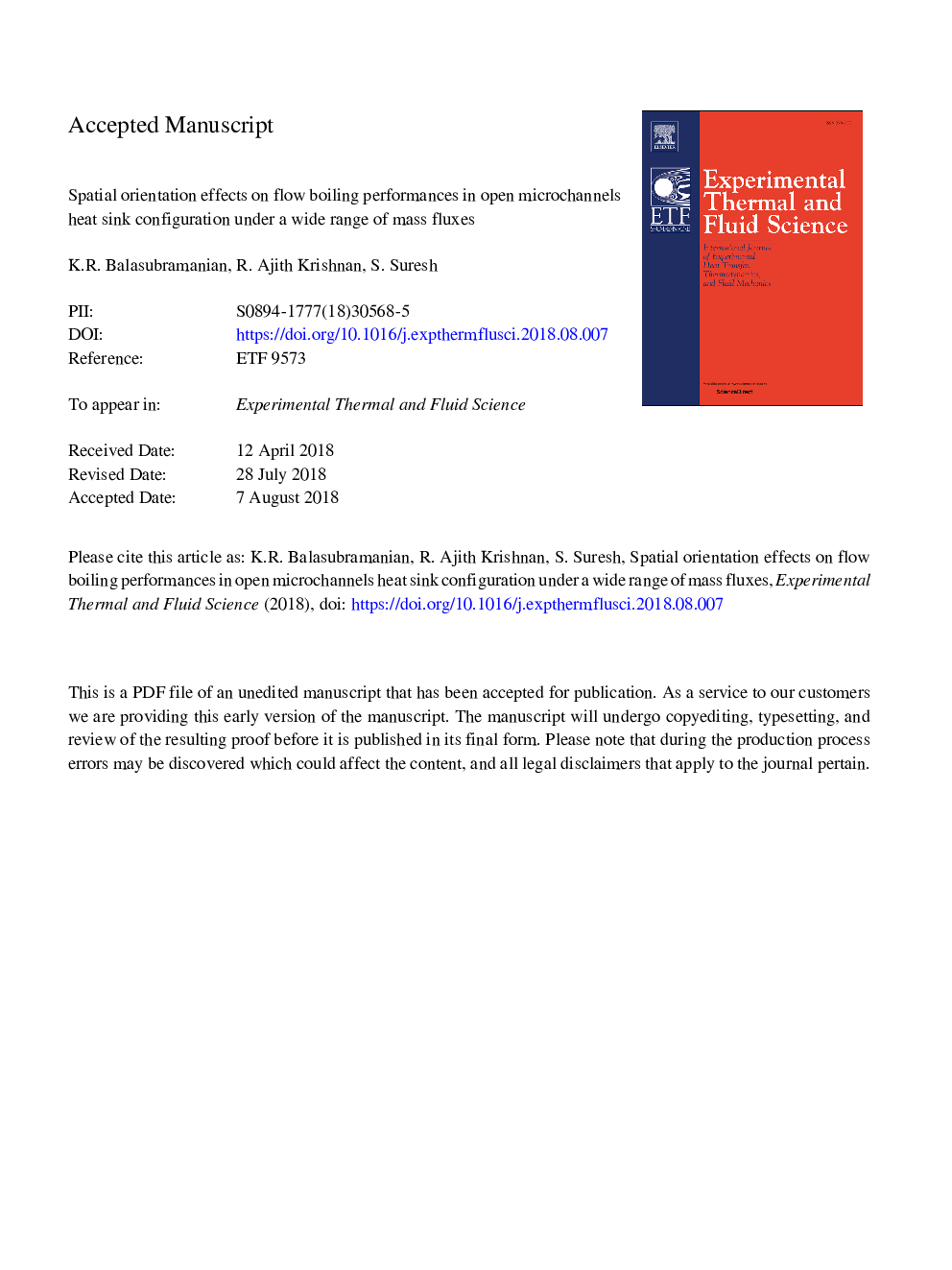| Article ID | Journal | Published Year | Pages | File Type |
|---|---|---|---|---|
| 7051480 | Experimental Thermal and Fluid Science | 2018 | 45 Pages |
Abstract
This paper presents the results of the flow boiling performances in an open microchannels heat sink under different spatial orientations with a wide range of mass fluxes. Subcooled flow boiling experiments were conducted with deionized water as the coolant in an open microchannels heat sink with 31 parallel microchannels and 400â¯Âµm uniform gap over the channel top. The microchannels were 305â¯Âµm in width and 312â¯Âµm in depth and having a fin thickness of 300â¯Âµm. Flow boiling experiments were conducted with the heat sink positioned in four different orientations such as horizontal upward facing (HU), horizontal downward facing (HD), vertical downflow (VDF) and vertical up flow orientation (VUF) orientations with mass flux ranging from low, 77â¯kg/m2â¯s to high, 911â¯kg/m2â¯s. The performance of the open microchannel configuration was also compared with the closed microchannel performance reported in the previous studies by the authors. Boiling curves, heat transfer coefficient and pressure drop data were reported for the different orientations of the heat sink. The effects of orientation of open microchannel heat sink with the experimented manifold gap of 400â¯Âµm on the flow boiling performances were found to be negligible. The open manifold space over the microchannels enables the bubble nucleation to continue within the channel even when the vapour occupies the manifold area. The vapour bubble interactions were also reduced during flow boiling in open microchannels even when the inertia and gravity force direction opposes. Bubbly flow and confined slug flow was observed to be the most dominant flow patterns in the open microchannel configuration. Slug elongation and slug stagnation with subsequent condensation were observed in case of VUF and VDF orientations.
Related Topics
Physical Sciences and Engineering
Chemical Engineering
Fluid Flow and Transfer Processes
Authors
K.R. Balasubramanian, R. Ajith Krishnan, S. Suresh,
